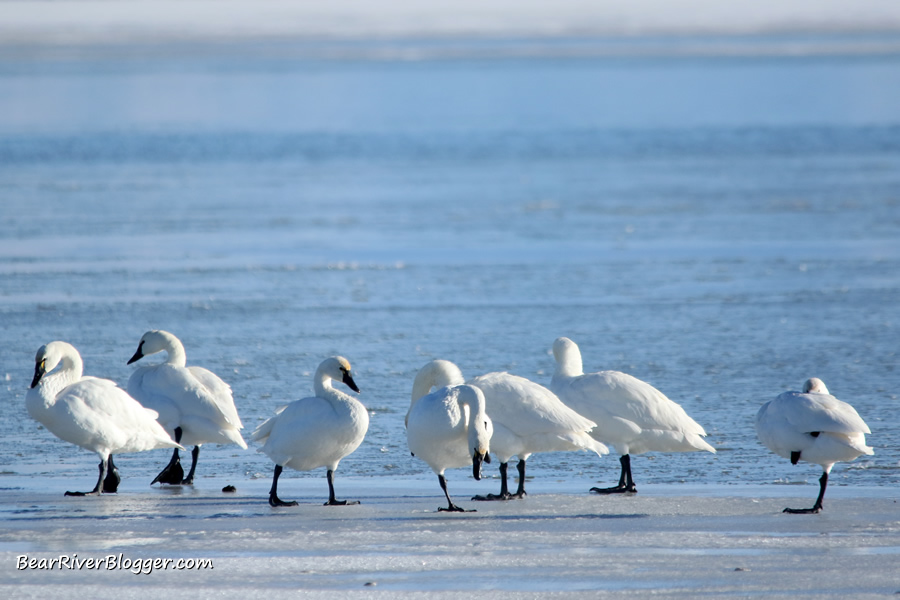My hands are still trying to warm up from the frosty 19-degree Fahrenheit drive I took around the Bear River Migratory Bird Refuge auto tour route this morning but having a flock of tundra swans a mere 50 yards from the roadway was well worth it in my book.
It was also worth it since I was the only vehicle on the refuge for nearly an hour or so, maybe longer, giving me plenty of time to watch, photograph, and enjoy the beautiful tundra swans so uncharacteristically close to the auto loop this time of year.
Typically, the tundra swans have migrated south to northern California by now so having this many swans on the bird refuge, especially in such close proximity to my camera like this, for the first week of January, is, well, quite strange to say the least.

But it has definitely been an odd winter so far with regards to birdwatching, in general, on the Bear River Migratory Bird Refuge as these tundra swans aren’t the only birds that should be somewhere else this time of year.
In fact, the day after Christmas I took another drive around the auto loop and photographed a flock of 50 American avocets that flew right over my head, looking as if they had no intention of landing anytime soon until they found a much warmer and a more hospitable climate for shorebirds.
In addition to the avocets, every drive I’ve taken around the bird refuge auto tour route this winter, today was certainly no exception by any means, I have seen at least a couple white-faced ibis per trip, including 15 of these unique birds on one lap around the refuge last week.
White-faced ibis is another bird species that should be somewhere else a lot warmer this time of year rather than searching for and poking their long, curved beaks in small pockets of partially open water on the frozen wetlands of the Great Salt Lake.

For anyone interested in viewing and photographing tundra swans, the best time is certainly during the first week of March when thousands upon thousands of migrating swans temporarily congregate on the Bear River Migratory Bird Refuge as they fly back to the northern Alaskan coast for their breeding season.
They usually start showing up in early February in small flocks and by the latter part of the month when the ice is typically starting to retreat, numerous tundra swans are oftentimes close to the auto loop when the melting ice along the roadway is a bit more reluctant to leave.
Tundra swans need open water to feed on submerged wetland vegetation, including the plant’s stems, leaves, and tubers, but when there is still partial ice flows on the refuge these large birds will opt to casually sit on the ice during the day in very close proximity to the open waterways when they aren’t actively feeding.
So depending on how, when, and where the ice starts to melt on the bird refuge some years the migrating tundra swans can be found just a few hundred yards from the auto tour route during February and occasionally into early March if we have a very late spring thaw.
For now, who knows how long these tundra swans will stay here on the nearly frozen-over Bear River Migratory Bird Refuge but as long as they are here these resilient swans offer birdwatchers and photographers alike a unique, albeit a little frosty, opportunity to view and photograph these beautiful birds in a very serene setting like a frozen wetland with the snow-covered Wasatch Mountains in the background.

If you’re like me, an avid birdwatcher and photographer no matter what time of year it is, I offer you to head on over to our subscribe page and sign up for email notifications for future blog posts about our excursion on and off of the famous Bear River Migratory Bird Refuge auto tour route.
We have also recently started a podcast channel to help keep birdwatchers and photographers alike up to date on what we are seeing on the bird refuge so head on over and follow us there for updates on the refuge.




